George Leach is probably a lot like you. He says he’s “always” played the guitar, but spent years in a high-stress engineering job with Intel, as music wasn’t his career path. In the eighties, he got into collecting guitars as a hobby, and from there his luthier business took root. In 2006, he and his business partner Diana Huber, formerly a software tester in the telecommunications sector, left their high-tech jobs to devote themselves to the guitar full time.
However Phoenix Guitar Company isn’t just about building and selling guitars. In addition to being a high-end custom-building business – they operate on a “You want it? You got it” mantra – George and Diana pass on the craft through group and individual guitar building courses in their shop. The courses have been so successful that George says most of the guitars produced in their shop in a year are student-made.
We caught up with George and Diana to talk about how they ended up as luthiers, where their models come from (short answer: the customer), and why building guitars isn’t exactly less stressful than Intel.
How did you get started building guitars?
I’ve always played the guitar. I was getting more into playing and collecting some guitars, and around 1988 or early ’89, one of my guitars developed a problem – the bridge started to lift. So I took it to a local repair shop to have it fixed, and they messed up my guitar. I thought, you know, with no training I can certainly do that good! And the whole thing took off into a direction I never expected it to.
I worked on several friends’ guitars, taking them apart and putting them back together, and I finally decided to build one. A friend of mine sent a guy over to check out the guitar I had built and he ordered one, and then somebody else ordered another one, and it’s just kind of been going ever since.
You just came out with the 14” Baby Phoenix archtop; how do you come up with your models and shapes?
Both of us are players and so we develop guitars based on what we like. The most popular guitar that we sell is our steel string grand concert. It’s a 16” lower bout, large body guitar with a lot of sound, and people seem to really like that. We sell an OM also that has a smaller body, which appeals to a lot of people. It just depends, we talk to different people and we build something that we think makes sense. That’s kind of the way we’ve developed our model so far – just how we thought would make sense.
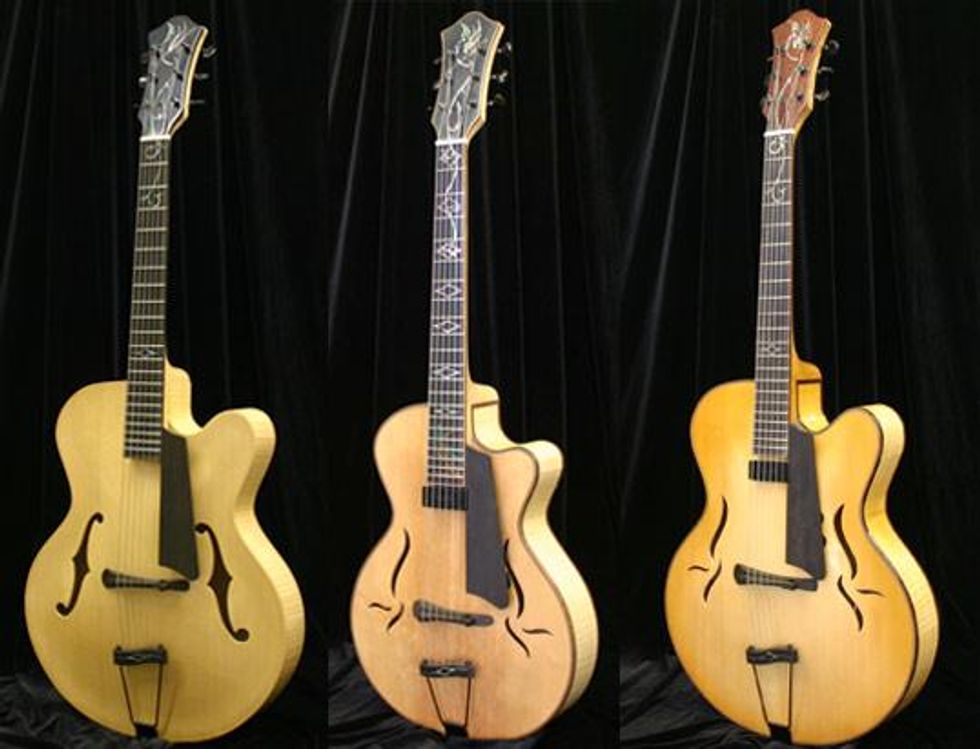 | |
|
Basically every guitar you make is custom made, right?
Pretty much custom, yeah; they’re all hand-made, one at a time.
If somebody comes to you with an idea, you’ll give it a shot?
Absolutely. We know people are going to want a different variety of sizes, 14, 15, 16, 17… somebody may order an 18 someday, and we’ll build it. But with the 14 and 15, we didn’t have a specific order for those when we went out and built the first ones.
The thing is, if somebody came to us with a specific request that’s somewhat off the wall, we’d work closely with them to develop that guitar.
Any interest in electric guitars?
You know, if somebody wanted to order an electric and made it worth our while we’d do it, but at this point there are so many places where you can buy a great electric that that’s not something we feel the need to build.
You guys really place a high importance on working closely with the customers on each guitar.
Well, it’s a lot of fun. Since we’re both players, when we get a guitar we want it to be a good one. We want it to play really great, and it’s even better if you know who built it and you can call them up and talk to them or ask them a question and develop a bit of a relationship.
You might appreciate the guitar a bit more than getting something from a box…
Oh, absolutely. Once, we had just finished a steel string grand concert on a Wednesday, and a fellow and his wife walked in that Thursday, saw it and bought it. And he’s called us a couple of times to ask about things like which tuners we use and other things. He’s in Oregon, so it’s great that he can write and ask questions and we know that he’s got the guitar and he’s taking great care of it.
We’ve also had the fortune of working with some international customers. We had one customer in New Zealand who was here on vacation and came in the shop saw an archtop sitting on the shelf that Diana was in the process of building, and he said, “I want one just like this.” You can see that on the website on Diana’s current project page. We also have a customer in the UK who is purchasing her second guitar from us.
The current project pages, with the in-progress pictures, are a nice addition to the website. Does it help connect with the customers?
I think that’s true, and it’s something that both of us were into before we started this – we enjoyed seeing how people do different things, and so we thought that other people might enjoy seeing that on our website. Although we’ve had the same current projects up for a while – we’ve just been so busy with the classes!
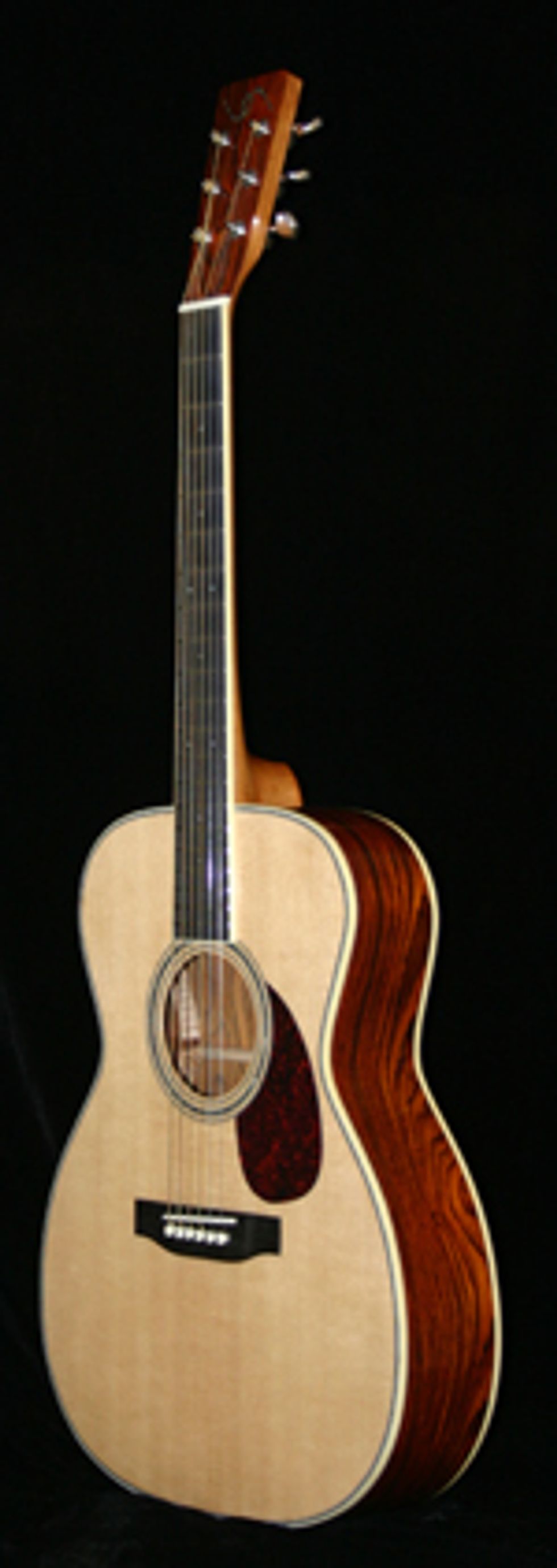
|
Well actually, I took a class first. I had built a few guitars – I built my first one in 1989 – and in 1992 I went to a class in Peter''s Valley, New Jersey that was actually being taught by Dick Boak and Bill Cumpiano, who are two pretty good names in the business. At this class I fell in love with the whole idea… I really enjoyed it. They invited me back to help teach the class for a couple of years after that. And this all was a part-time thing for a long time; in late-2000 I decided to hold my own classes, just a couple of students out of my garage. I taught the class for four or five years just to people I knew. Diana took the class in 2001 and started helping me immediately after – we have a lot of fun with it.
The students’ guitars looked really impressive on the website.
The students’ guitars are really great.
How large are the classes, generally?
The weekend warrior class, which is normally taught every Saturday, has six students.
And then you do individual ones?
Yes, we do one-on-one and, at the most, one-on-two during the week. We’ve got a one-on-one archtop class going right now; Diane’s about to start a one-on-two class with a couple of steel strings.
A lot of the people who take our classes aren’t players. One gentleman who’s just about to take the class for the second time, built his first guitar for his youngest son, and he’s taking the class again to build a guitar for another one of his four sons, but he doesn’t play himself.
In a class like the archtop class, do the students get to choose what size they want to make?
Well, they will be able to soon, we think. For the student archtops we don’t carve the tops, we use the Fritz Kollitz company out of Germany, which offers molded tops and backs. They’re solid wood, but they’re molded, so we use them for the student classes.
It’s probably a bit easier for the students.
Yeah, it’s a lot less weight and less chance of screwing up the guitar. It’s actually what we typically do on our 17” archtop, unless someone requests a specific wood and we have to carve it. We’ve been really impressed with the way these have sounded acoustically – a very powerful sound, the tops are very strong. If somebody wants a carved top, we’ll give them a carved top, of course, but in the classes, people want to walk out with a great guitar. If someone doesn’t have that kind of experience to carve a top, it’s something that’s more likely to be a problem. But we talked with Oliver Kollitz at the last NAMM show, and he said that they offer 14-16” tops, and we’re going to sample these; if we find that they fit within our design, then we’ll be able to offer a bigger variety of archtop sizes.
So what are you working on now? The 15?
I’m working on what we’re going to call the Phoenix 15. It’s the 15” version of the Baby Phoenix. We know a number of professional players who get together every so often and we talk to them about the guitars. One of them said that the 14 was a bit small, and with his arthritis, the 17 was too big – he wanted to know if we did a 15. And the two of us had a light bulb go off simultaneously.
Is it the same guitar, just in different sizes?
Pretty much, but they all have slightly different touches. The Baby Phoenix has flame f-holes, and the Phoenix 15 will have a standard bound f-hole. But, you know, we can do any of these features on any of the models.
Do you guys have the classical model now, or are you still working on that?
We finished the first one. We have a really good relationship with the professor of classical guitar at Arizona State, and he came over to evaluate the guitar and he really liked it. That one has a cedar top and Indian rosewood for the sides and back. Diane is working on another one now that’s going to be Englemann spruce top and Zircote for the sides and back.
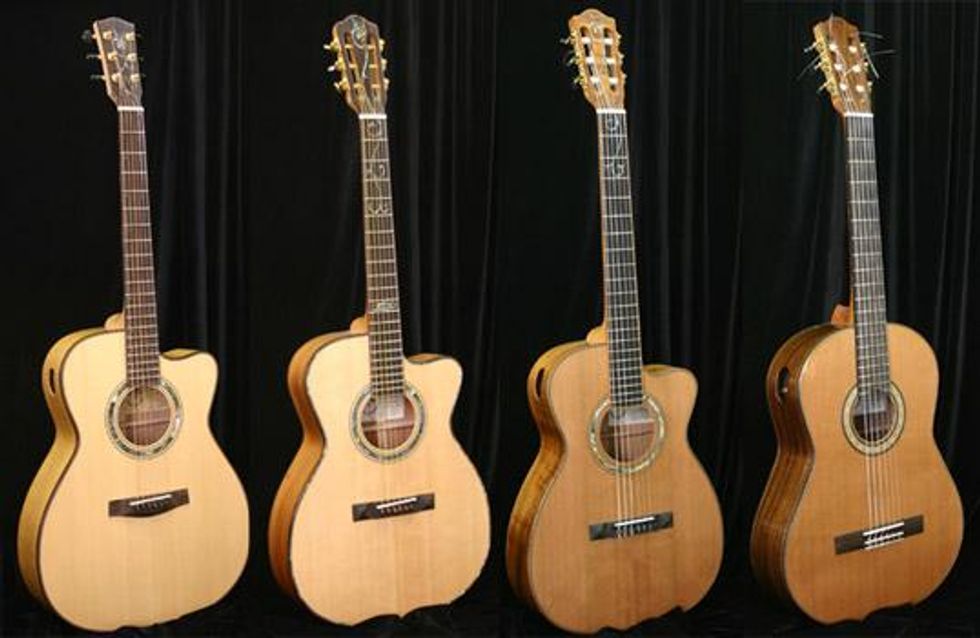 | |
|
You use a wide array of wood...
We’re both really into the different kinds of wood.
Do you have any trouble getting any of it?
It’s all going up in price! [laughs] We haven’t had too much trouble along those lines lately.
Small scale probably helps.
Yeah, we do operate on a pretty small scale, so we actually have a little bit of Brazilian rosewood, some Madagascar rosewood, which is really beautiful, and then a lot of the standard stuff. We love koa, it’s just beautiful stuff. The bulk of the guitars coming out of our shop each year are our students’, and most of our students’ guitars are Indian rosewood or mahogany; occasionally they upgrade to koa or walnut.
How many guitars do you make in a year?
Well, we do a lot of repairs as well, so I’d guess that I probably make about six or seven per year because of repairs and classes, and Diane probably makes a few more. She might make as many as ten in a year, but she’s also busy teaching classes as well. We always have a couple [guitars] going at any given time.
How long does it take from order to receiving?
That’s very dependent on what’s going on in the shop. If we had nothing on our plates and we could focus on building one guitar from start to finish, it would take about three weeks to get everything built, let the finish cure, and do the final sanding. However, that never happens. We have repairs that come in and classes that we’re teaching, so right now, if someone were to buy a guitar it would probably be, depending on what they ordered, between 3-5 months that we could say for sure.
|
Well, we like the mix the way it is, for now at least. For both of us it was strictly a part-time thing up until about a year and a half ago, and that spigot doesn’t just suddenly turn on and there aren’t suddenly two dozen people who just have to have one of your instruments. There are a lot of places out there where you can buy instruments and until you develop some kind of reputation, people don’t necessarily know you’re there. So we have to get a little bit of cash flow to keep the bills paid, and the classes and repairs have been great for that.
And that’s one reason why our time for building a custom instrument is relatively short right now; we’ve got a couple of guitars in the line, but not a year’s worth. Over time that’ll change. I enjoy doing repairs a lot, and I’d hate to give that up completely, but we might have to scale back eventually. As business increases, we might have to limit what kinds of classes we do as well, but I don’t think we’ll stop completely.
It sounds like a little more fun than Intel…
[Laughs] Yeah, I’m not sure there’s less pressure, but it’s more fun.
I suppose there would be pressure to get every little detail right for people.
Yeah, you want to get it right and you want to get it done when they’re expecting it, so as it’s coming down and you’ve got a week left and you’re just starting to spray your finish, you want to make sure that something doesn’t go wrong. We’ve had that happen, and boy, that’s a thrill...
It’s really tough when you’re finishing up a guitar and getting ready to send it to a customer and you get a sand-through. I’m sure every luthier in the business has had that happen to him. That’s the pressure part.
The inlays don’t look so easy either!
Well, it gets easier. [The Phoenix logo] takes a few hours to do. You know, that’s one thing that I think both of us like about this, though. You’re working with the wood for a while, then you go do inlay and it’s totally different. Then after that you go to spray finish, which is again totally different. So you have completely different things you’re doing through the course of building.
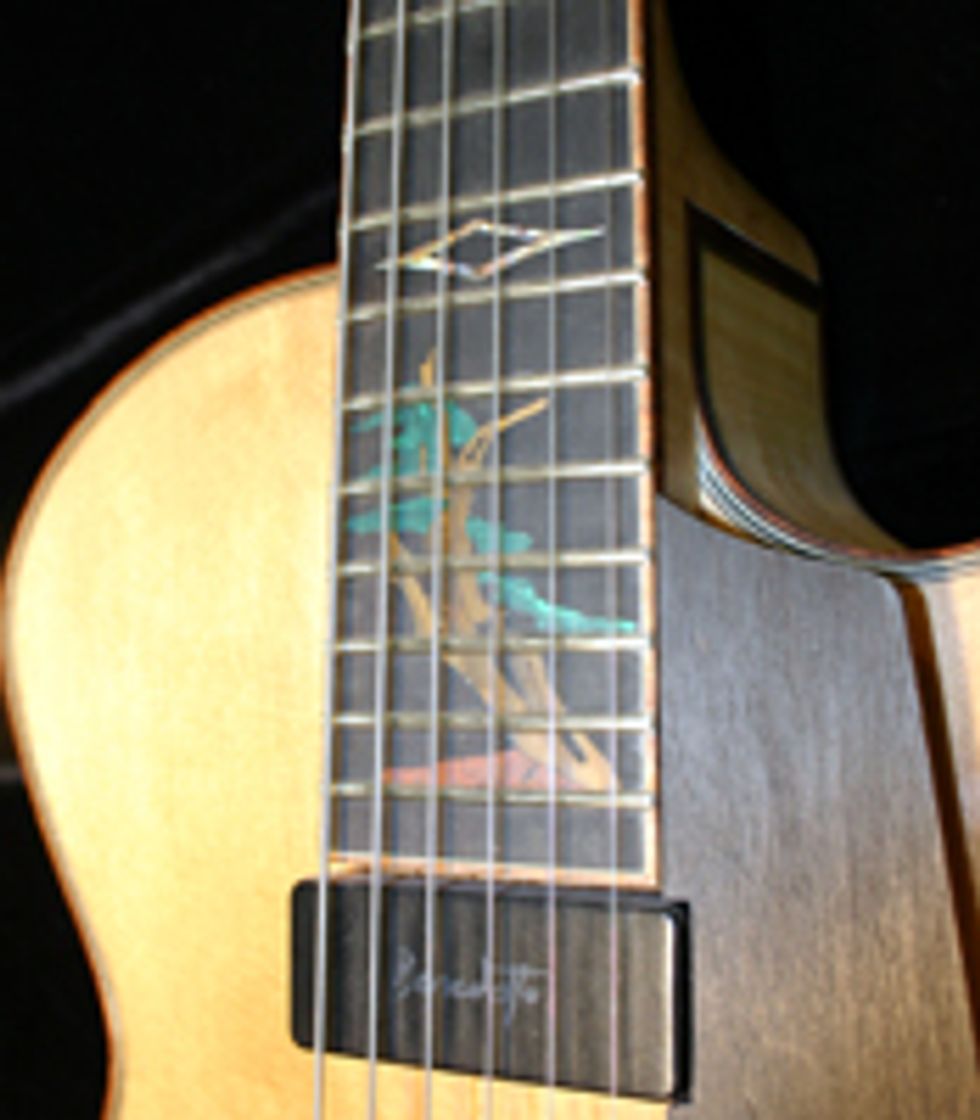 You guys have some pretty detailed inlay, like the bonsai tree on the Baby Phoenix. What’s the story behind that design?
You guys have some pretty detailed inlay, like the bonsai tree on the Baby Phoenix. What’s the story behind that design?The Baby Phoenix has a bonsai tree inlay, as does the guitar that Diane did for the customer in New Zealand. He actually e-mailed us a bunch of pictures of bonsai trees and we put a couple of them together and sent pictures back to him until we had the exact one he wanted.
Are most of your customers walk-ins or online?
We have people that see us on the web, or in magazines. People will see us in these ads, and when they come to town on vacation or something, they’ll come by.
People can just kind of come in and check out your shop and watch you working any time, right?
Absolutely. We had one gentleman call last week who said, “I saw on your website that people can just drop by and see your shop and I want to take you up on your offer, I’m sitting right in front of your shop!” His wife was on a business trip from Atlanta, so he came by and played a bunch of the guitars and got a tour of the shop.
Do you guys sell in stores at all?
Well, we have tried it with mixed results. We’ve had guitars in stores where somebody has damaged the instrument and the store won’t always call us and let us know, so right now we’re a little soured on sending our guitars out to a store. We know we’ve got to do more of that.
See the Baby Phoenix in this month''s Modern Builder Vault. For more information, visit phoenixguitarco.com



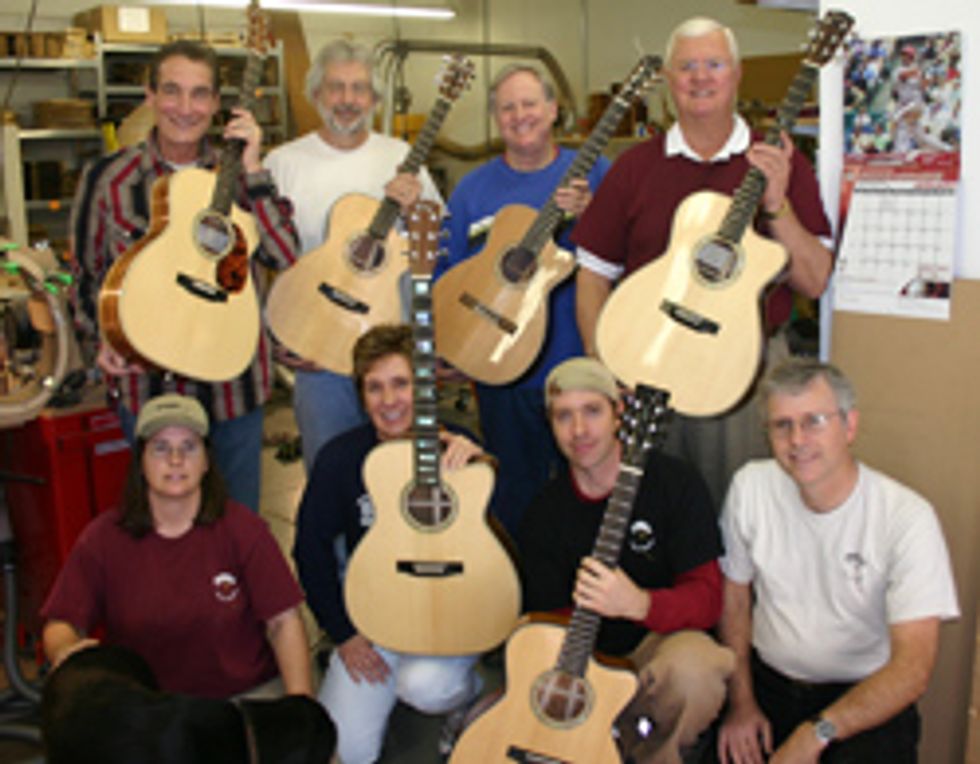




![Rig Rundown: Russian Circles’ Mike Sullivan [2025]](https://www.premierguitar.com/media-library/youtube.jpg?id=62303631&width=1245&height=700&quality=70&coordinates=0%2C0%2C0%2C0)


























